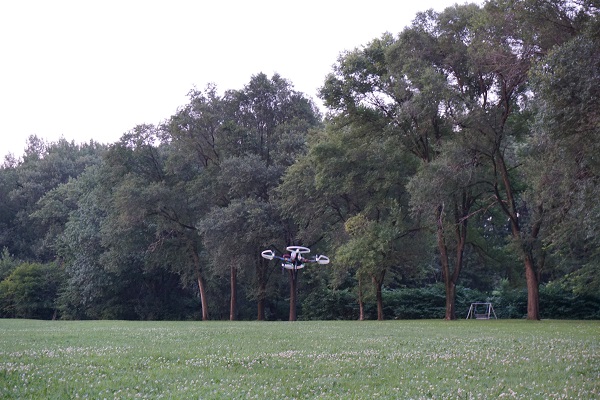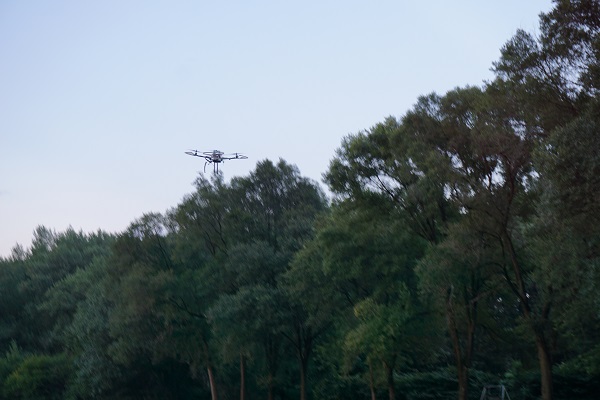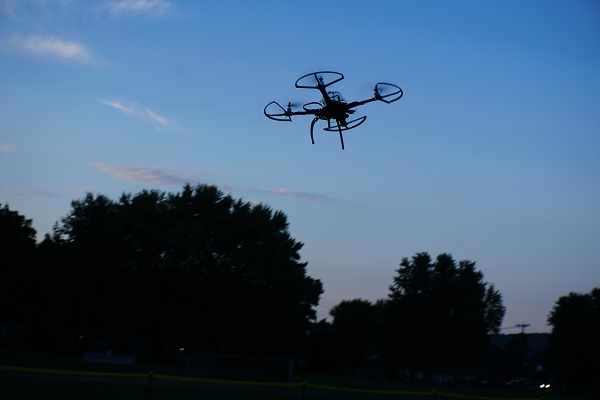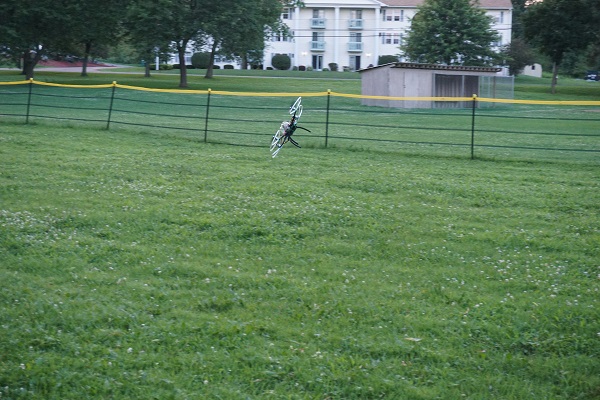It flys!
Well, sort of.
It does fly more stably now that we added those anti-vibration grommets. That's why we decided to fly it in the park across the street. (We also added the collet-style prop adapters, but one prop still flew off. More on that later.)
Unsurprisingly, each of our several flights ended in a crash. (We are newbies after all.)
What did surprise us, however, was that three of our four chassis legs broke. Reason: they can't take the force of horizontal landings. We've since reinforced them.
Quads should be landed vertically. Otherwise, you run the risk of flipping over and damaging the props.
But to land vertically you first have to hover, which our quad doesn't do well. Why?
Well, one reason is drift.
Drift has several causes. One cause is a miscalibrated gyro, which in turn is caused by not taking off from a level surface. Since we're taking off on grass, we can assume our gyro is off by at least few degrees. (Vibration can also affect the gyro, and we've installed anti-vibration grommets.)
Another cause of drift is unbalanced weight, i.e. wrong center of gravity. Our battery placement is sure to be unbalanced because we "balance" it by eyeball and feel. And since LiPo batteries are heavy, being off by just a little bit could affect drift.
Defective motors and props can also cause drift. Our motors all seem to sound alike when we do the motor test in Betaflight Configurator, so for now I'll assume they're fine and don't affect drift. (How would you measure them anyhow?) The props look okay, too.



WHAT? I thought collet adapters would fix that problem.
Maybe I just didn't tighten that one properly.
Or, maybe I overlooked something.
Could it be that the thread direction on two of the adapters should run in the opposite direction, otherwise they unwind? The threads on all the prop adapters I saw on Amazon ran in the same direction; had I seen otherwise it would have tipped me off.
As a first corrective measure we'll secure the bullet nut of the prop adapter to the outrunner motor casing with Gorilla Tape. That's a simple solution if it works. We'll take it from there.

In conclusion, between minimizing drift and tuning PID values (simultaneously), there's a fair amount of complexity involved in getting a homemade quadcopter to fly stably. Who knew? :-)